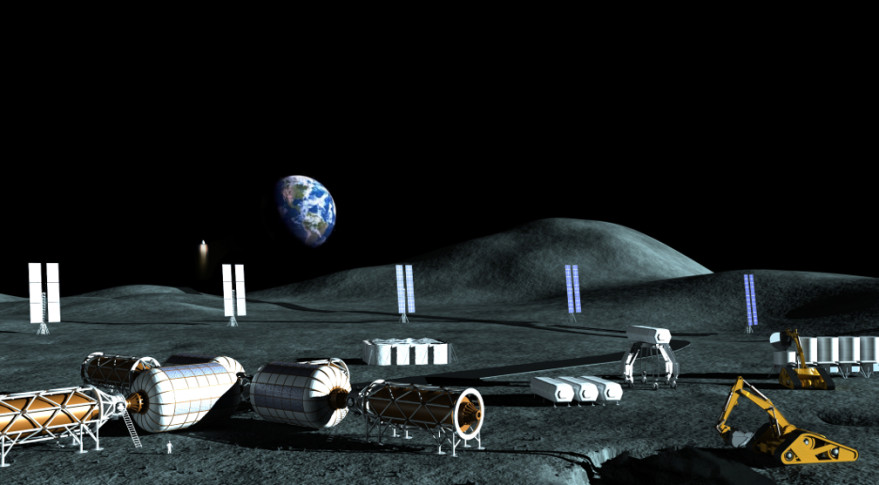Trump Transition Office Adding Commercial Space Expertise to NASA Landing Team

SANTA FE, N.M. — The transition office for President-elect Donald Trump is adding one, and perhaps up to three, people to the landing team assigned to NASA to provide more insight into commercial space activities.
The transition office added Charles Miller to the NASA "landing team" on Dec. 20, according to an update of the rosters of the landing teams assigned to various federal agencies on the transition website. Unlike previous assignments of individuals to the landing team, there was no formal statement issued by the transition office.
Miller, like many other members of the landing team, previously worked for NASA. He served as senior adviser for commercial space from 2009 to 2012, a time when NASA was starting several commercial space efforts, from its commercial crew development program to the Flight Opportunities program for suborbital research. [Related: What a Trump Administration Means for NASA]
Prior to joining NASA, he was chief executive of Constellation Services International, which worked on concepts for commercial cargo delivery under NASA's Alternative Access to Station program, a precursor to NASA's later commercial cargo program. He was also a co-founder of NanoRacks, a company that provides flight services to the station for experiments and small satellites. Miller established a consulting company, NextGen Space LLC, after leaving NASA.
Miller has also been active in space policy and advocacy. In the mid-1990s he established ProSpace, a grassroots lobbying group focused in particular on commercial space issues, which helped win passage of the Commercial Space Launch Act of 1998. After leaving NASA he became executive coordinator of the Alliance for Space Development, a coalition of space organizations supporting commercial space policy initiatives.
The addition of Miller to the landing team for NASA is seen by many as an effort by the overall Trump transition effortto add commercial space expertise to the team, which largely features individuals who previously worked on more traditional programs at NASA. The backgrounds of many team members have led to speculation that the incoming administration might pull NASA's human spaceflight efforts back to the moon.
Miller, ironically, could support that, but with a commercial approach. Miller was the principal investigator of a 2015 study that concluded that use of commercial space capabilities could allow for a human return to the moon at a much lower cost than a government-led effort. The study, funded by a $100,000 grant from NASA's Emerging Space Office, found that use of commercial vehicles, as well as contracting tools like public-private partnerships, could enable brief "sortie" missions to the moon in five to seven years, from which a more permanent presence there could be built up. [50 Years of Presidential Visions for Space Exploration]
Get the Space.com Newsletter
Breaking space news, the latest updates on rocket launches, skywatching events and more!
The transition office may add additional individuals to the landing team, also with commercial space backgrounds. One person under consideration is Alan Stern, best known as a former NASA associate administrator for science and principal investigator for the New Horizons mission to Pluto. Stern is currently the chairman of the Commercial Spaceflight Federation, an industry group that includes among its members many leading commercial space companies and spaceports.
Stern has also been involved in a number of commercial space companies. He is the chief scientist for World View, a company developing high-altitude balloons for tourism and research, including NASA's Flight Opportunities program. He also previously consulted for other commercial space companies, including Blue Origin and Virgin Galactic. He was president and chief executive of Golden Spike, a company that in 2012 announced plans for commercial human missions to the moon but which made little progress since that announcement.
Another individual under consideration for the NASA landing team is Alan Lindenmoyer, a retired NASA executive who managed the Commercial Crew and Cargo Program Office at the Johnson Space Center from 2005 to 2014. In that position, he managed the development of the commercial cargo program from its inception through the entry into service of commercial cargo vehicles by Orbital ATK and SpaceX.
Even before the addition of the new landing team members, commercial space interests had influence with the overall transition. SpaceX Chief Executive Elon Musk and Blue Origin Founder Jeff Bezos were among the attendees of a Dec. 14 meeting of technology company executives with President-elect Trump and other senior advisors, including billionaire Peter Thiel, whose venture capital firm has invested in SpaceX. Musk was also named the same day to an advisory group, the President's Strategic and Policy Forum, the only current aerospace executive among the group's 19 members.
This story was provided by SpaceNews, dedicated to covering all aspects of the space industry.
Join our Space Forums to keep talking space on the latest missions, night sky and more! And if you have a news tip, correction or comment, let us know at: community@space.com.

Jeff Foust is a Senior Staff Writer at SpaceNews, a space industry news magazine and website, where he writes about space policy, commercial spaceflight and other aerospace industry topics. Jeff has a Ph.D. in planetary sciences from the Massachusetts Institute of Technology and earned a bachelor's degree in geophysics and planetary science from the California Institute of Technology. You can see Jeff's latest projects by following him on Twitter.










